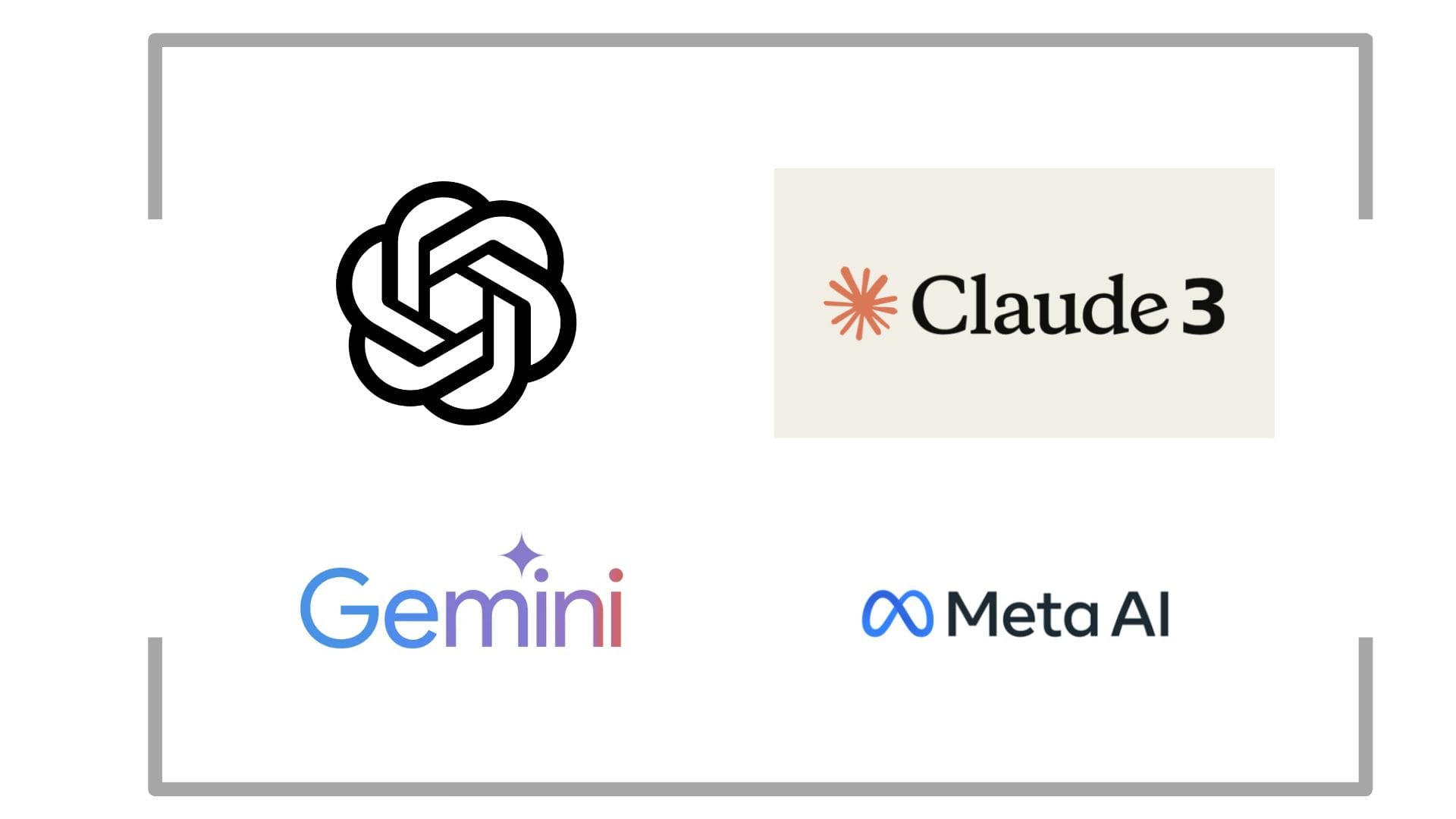A Comparative Analysis of Top Language Models
Understanding the impact of RAG on AI chatbots: in-depth analysis of ChatGPT, Claude, Llama and Google Gemini for optimal choice.

In the rapidly evolving domain of artificial intelligence, Retrieval Augmented Generation (RAG) has emerged as a transformative approach in developing AI chatbots.
RAG combines the power of large language models (LLMs) with dynamic data retrieval techniques, enabling chatbots to provide more accurate, relevant, and contextually rich responses. As businesses continue to integrate chatbots into their operations, understanding which LLMs best support RAG can be crucial.
This article offers a detailed comparison of four leading LLMs—ChatGPT, Claude, Llama, and Google Gemini—to help professionals select the best model for their specific chatbot needs.
Retrieval Augmented Generation: Why It Matters for AI Chatbots
Before diving into the comparison, it's important to clarify what RAG involves. This technology enhances a standard LLM's response generation by incorporating real-time, external data. For a chatbot, this means not just answering from pre-learned data but also pulling in the latest information, making responses more relevant and up-to-date.

Comparative Analysis of LLMs for RAG Chatbots
1. ChatGPT by OpenAI
- Capabilities: Exceptional at generating nuanced and context-aware responses, making it ideal for a RAG setup where depth and relevance are key.
- RAG Suitability: High. ChatGPT can seamlessly blend retrieved information into its responses, enhancing the chatbot’s reliability and richness.
- Ideal Use Case: Best for customer service and technical support where historical context and detailed explanations are valued.
2. Claude 3 Opus by Anthropic
- Capabilities: Known for its "can-do" attitude, Claude may enhance a chatbot's ability to handle varied queries with a proactive approach.
- RAG Suitability: Moderate to high. It's geared towards adaptability, which can be leveraged to merge external data effectively.
- Ideal Use Case: Suitable for interactive marketing and consumer engagement where personality and adaptability are crucial.
3. Llama 3 by Meta
Trained in four sizes: 7, 13, 33, and 65 billion parameters for the first version; 7, 13, and 70 billion parameters for Llama 2.
- Capabilities: Its open-source nature allows for extensive customization, crucial for integrating specific retrieval databases or knowledge bases.
- RAG Suitability: Moderate. Requires more effort to fine-tune but offers flexibility in building a tailored chatbot.
- Ideal Use Case: Great for academic or research-oriented applications where customization and cost-efficiency are necessary.
4. Google Gemini
Ultra. Most capable and largest model for highly-complex tasks.
Pro. Best model for scaling across a wide range of tasks.
Nano. Most efficient model for on-device tasks.
- Capabilities: Excels in incorporating real-time data from the internet, aligning perfectly with RAG’s emphasis on up-to-date information retrieval.
- RAG Suitability: High. Its ability to draw on current data makes it potentially the most effective for RAG.
- Ideal Use Case: Excellent for news-related chatbots or customer interactions that require the latest information.
Choosing the Right Model for Your Chatbot
Selecting the right LLM for a RAG-based chatbot involves balancing several factors:
- Timeliness vs. Depth: Decide whether your chatbot needs to prioritize current information (favoring Google Gemini) or deep, contextual understanding (favoring ChatGPT).
- Customization Needs: Consider how much you intend to customize your chatbot. Open-source models like Llama offer more control but require more resources to implement.
- Cost Considerations: Evaluate the operational costs associated with each model, especially if your chatbot will handle large volumes of queries.
Using open-source large language models (LLMs) allows organisations to manage their own versioning. This independent management means that companies are not tied to the development cycles of external vendors, giving them considerable control and flexibility. By managing their own versions of software, companies can implement updates specific to their operational needs and security standards. This ability to immediately adapt to evolving technological and market conditions, without waiting for provider updates, can be a crucial competitive advantage.
My conclusion
As AI continues to advance, the integration of RAG into chatbot solutions offers promising improvements in how businesses interact with customers.
By choosing the right LLM—be it ChatGPT for depth, Claude for adaptability, Llama for customization, or Gemini for timeliness—companies can significantly enhance the effectiveness of their chatbot services.
Understanding these models in the context of RAG is crucial for any professional looking to deploy cutting-edge chatbot solutions.



